Most pine nuts are small… eye-of-the-needle small. Seven species or so have pine nuts that are large enough for commercial harvesting. In between lies a lot of little sizes. Adding to the confusion is the fact that the size of the pine cone has nothing to do with the size of the pine nut with some of the largest nuts coming from the smallest cones, a vice versa.
During class this weekend a suitable pine cone presented itself: Brown, not green, closed not opened, and with prickles on the outside. A squirrel had already shown interest in it so the cone was promising. In fact the squirrels had been busy with a lot of remains from freshly torn apart pine cones littering the forest floor. A big knife and a lot of prying uncovered the above pine nuts. Squirrels use their inch-long teeth (those little heads of theirs are mostly teeth said one who has raised infants and let them go.)
Harvesting pines nuts is probably not a calorie-positive activity, by hand at least. It takes some deftness with a knife (or time and heat.) The results are usually small and resinous. Think of each section of a pine cone as a wing. And at the base of the wing, at the core, is a small pine nut. You either have to dig your way in — with knife or squirrel’s teeth — or put the cone in a hot spot. Pines depend on more than animals to move their seeds around. They drop the cones during a fire so the heat will cause the cone to open and drop the seeds. Not too efficient but it works. This is also one reason for controlled burns and why one does not go looking for pine nuts where there has been a fire in the last couple of years. To read more about pines go here.
As the summer heat wears on — there’s at least another six weeks of it — our local wild cucumbers are setting heavily. Although they fruit from the spring into the fall now is the peak havesting seasons. The cukes have spent months growing long vines and climbing on top of fences, hedges and any plant that will support them. While they can cover large patches of ground the most common place to find them now is on other plants, from flowers to trees. Not strong, the vines break very easily and crushed leaves smell like cucumbers. To read more about the wild cucumber go here.
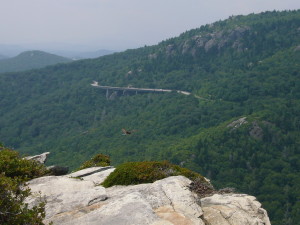
While taking a picture of the Linnville Viaduct a bird of prey flew into the scene. Photo by Green Deane
There has been a break in newsletter delivery because the entire staff — me — went hiking in the Smoky Mountains for a couple of weeks. The highlight of the trip was visiting and enjoying the hospitality of forager Doug Elliott and his wife Yanna. They own a significant part of a holler’s worth of bottom land about an hour from where I was based. It was a great time, thank you Doug and Yanna. I also took several hundred pictures of mushroom while hiking, which is easily explained. When hiking mountainous trails you have to look at the ground most of the time. As I saw mushrooms while looking down I took their picture. For taller plants you have to stop and look up. Mountains are not good places to trip and fall while looking up.
The trip was also an opportunity to update a lot of stock photos of edibles that just look better in a more temperate climate or just don’t grow in the wild locally like Jewelweed. It was a busman’s holiday I’ll admit but still enjoyable. And I lost eight pounds in 11 days of hitting the trails, and only dropped one camera once. One surprise was finding plane wreckage on top of Grandfather Mountain which I wrote about on my Facebook page. It wasn’t new but a 6,000 foot mountain top is one the last places one expects to find a pile of junk. On the other hand, it would be really odd to find remains of a car on top of a mountain but there was a lot of rusting machinery near old barns. Sad, really.
Upcoming foraging classes:
Sunday, August 31st, Red Bug Slough Preserve, 5200 Beneva Road, Sarasota, FL, 34233. 9 a.m.
Saturday, September 6th, Mead Garden,1500 S. Denning Dr., Winter Park, FL 32789, 9 a.m.
Sunday, September 7th, Dreher Park, 1200 Southern Blvd., West Palm Beach, 33405. 9 a.m.
What do you see 16? There are three well-known “edibles” in this picture. Can you see them? Two of them are out of season locally but this picture was taken in North Carolina in mid-August. The answer will be here next week or you can see it in the Green Deane Forum shortly.
On the Green Deane Forum we post messages and pictures about foraging all year long. There’s also a UFO page, for Unidentified Flowering Objects so plants can be identified. Recent topics include: Tobacco Ash, Identification Helper, Mullein, Reishi, Plum-ish Looking Fruit Tree, Another Olive Like Fruit, Mushroom Knife, Nikon D5100 vs Canon Rebel T31, Fake Replacement Parts, Firebow Maple, The All-Natural Banana, and How I did It: Accessing a High Tree Branch. The link to join is on the right hand side of this page.
 My foraging videos do not include alligators but they do cover dozens of edible plants in North America. The set has nine DVD. Each DVD has 15 videos for 135 in all. Some of these videos are of better quality than my free ones on the Internet. They are the same videos but many people like to have their own copy. I burn and compile the sets myself so if you have any issues I handle it. There are no middle foragers. And I’m working on adding a tenth DVD. To learn more about the DVDs or to order them click here.
My foraging videos do not include alligators but they do cover dozens of edible plants in North America. The set has nine DVD. Each DVD has 15 videos for 135 in all. Some of these videos are of better quality than my free ones on the Internet. They are the same videos but many people like to have their own copy. I burn and compile the sets myself so if you have any issues I handle it. There are no middle foragers. And I’m working on adding a tenth DVD. To learn more about the DVDs or to order them click here.
To donate to the Green Deane Newsletter click here.


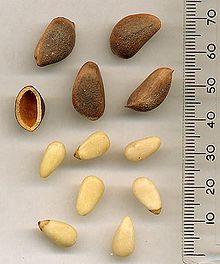

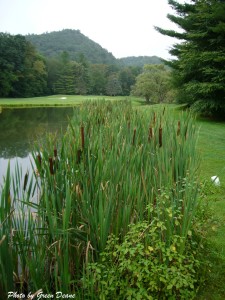
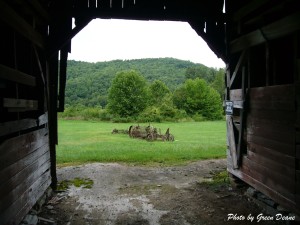
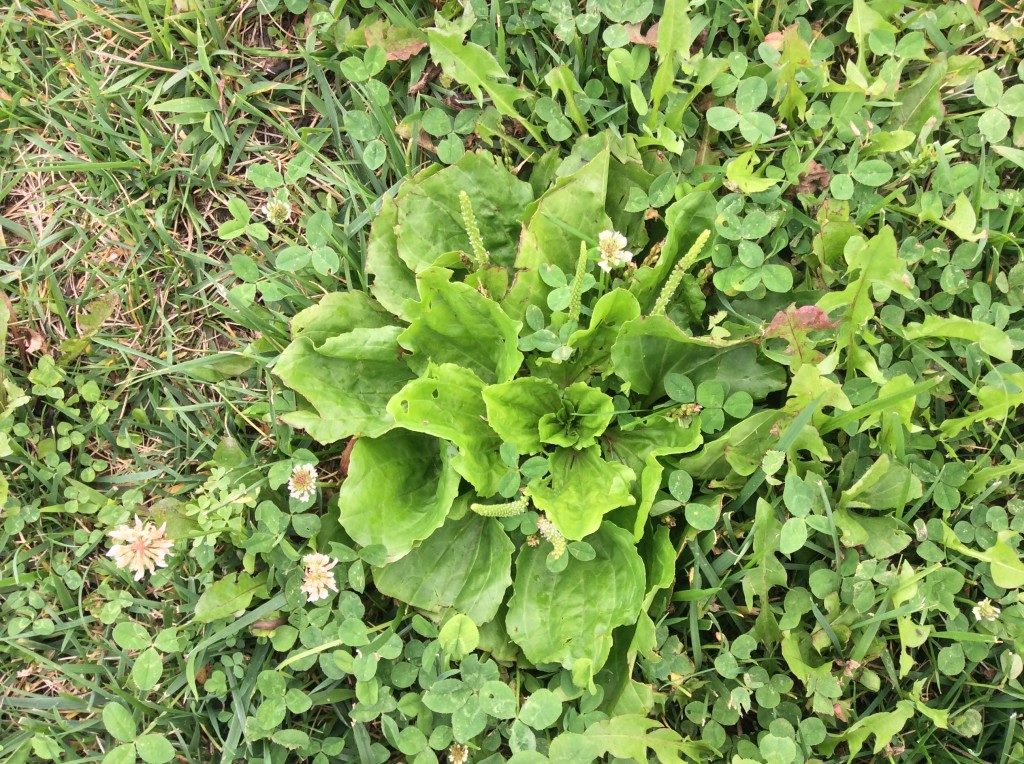


Just wanted to say that I really appreciate this site you devote so much time to, it is a huge help to me here in Upstate SC.
Ahhh you were in my neck of the woods. I moved here just for the reason of all the edible wild plants that grow here. The Great Smoky Mountains are some of the best places on earth. Very good mushroom year as well as berries and all other edibles.
Welcome back; glad you had a good trip. I was booked to perform in Las Vegas a few years ago and was able to make several side trips while out there. One trip was to the Valley of Fire State Park which I enjoyed greatly. Near the entrance to the park is a convenience store owned by the local tribe of Indians and there are wire racks chocked full of one-pound brown paper bags of pine nuts harvested by the Indians. I asked the lady in the store if there was some mechanical means for harvesting and she said no, that old women sit and shell the nuts from the cones. I can’t fathom the amount of man-hours of intense labor it must have taken to harvest an estimated several hundred pounds of nuts that were on hand. I thought at first that the 16 dollar per pound price was a little steep, but then though I would not shell a pound of nuts out myself for the same price. I splurged and purchased several bags and enjoyed them immensely.
I was wondering if you ever venture into Tennessee to do your foraging or to offer presentations?
side note: the website is in the baby stages of a work in progress. I’d much rather be in my garden or investigating new edibles than on my computer building a web site.
I do get to Roan Mountain, Tennessee, now and then.
Pleased to know you’ve had enjoyable time hiking in the Smoky Mountains – could that also serve as one of the best lessons for reducing obesity!
I’ve gone through your article “ Pining for You “ and I’m surprised that male Pine Cones should be described as small and soft instead of being woody and tough as usually expected. Still not to be more serious I’ve googled “Loperamide in Pine Nuts” in search of a relationship between this medicine and an ingredient in Pine Nuts as both are useful in treating diarrhea. I’m sad that many of my people nowadays are suffering from the disease mainly because of accumulation of rain water; consequently unhealthy environment. Personally, I resorted to Guava fruit instead of taking “Loperamide” obtained by my good caring wife . The Guava (Pisidium guajava) contains Quercetin which is thought to contribute to the anti-diarrhea effect. Back to the Pine Nuts. Let me refer to: pinenutsyndrome.wordpress.com/health which speaks about taste disturbances (bitter taste – PNS) Pine Nut Syndrome.
As said these are flourishing rainy days here in Sudan – thus growth of various useful plants . As part of educating my grandsons – Leen, Omer and Ibraheem now visiting us from San Jose,CA – on farming and agriculture, I’ve encouraged them to attempt growing some easy growing plants – namely: pumpkin, watermelon, and cantaloupe. Interestingly cantaloupe (locally called “Shummam”) a species belonging to the same family “Cucurbitaceae” as Melothria guadalupensis – has blossomed in these “ fertile” days of the rainy season. It has taken only one and a half months even to give birth to cukes !
I have some Jewelweed on my website and on the Green Deane Forum.
I used to pick pine nuts every deer season on Nevada. The cones would be open. You put a sheet or tarp under the tree and then shake it. You can collect a lot fairly quickly this way or by just picking off the ground. These were large pinion pine nuts.
Dont eat a lot of them raw. They have turpentine in them and it will burn your stomach and make you feel sick (have experienced this eating handfuls of them).